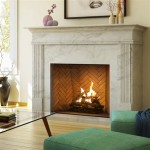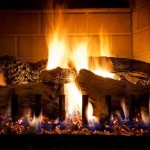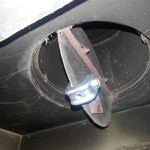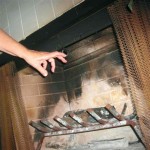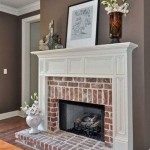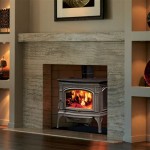Regency Fireplace Insert Blower Replacement: A Comprehensive Guide
Regency fireplace inserts are a popular choice for homeowners seeking to enhance the efficiency and aesthetics of their fireplaces. A key component in many Regency insert models is the blower, which circulates heated air into the room, maximizing heat distribution and improving overall comfort. Over time, however, the blower may fail or become less efficient, necessitating replacement. This article provides a comprehensive guide to understanding the intricacies of Regency fireplace insert blower replacement, covering troubleshooting, parts identification, the replacement process, and potential maintenance considerations.
Understanding the Function and Importance of the Blower
The blower in a Regency fireplace insert plays a crucial role in distributing heat. Without a functioning blower, much of the heat generated by the fire remains trapped within the firebox, ultimately escaping through the chimney. The blower actively draws cooler air from the room, passes it over the heated surfaces of the firebox, and then discharges the warmed air back into the room. This forced-air circulation significantly improves the rate at which the space warms and ensures a more even distribution of heat throughout the area.
A properly functioning blower can dramatically increase the efficiency of a fireplace insert. It allows homeowners to utilize more of the heat produced by the fire, potentially reducing reliance on other heating sources. This can translate to lower energy bills and a more comfortable living environment. Blowers are typically designed to operate quietly, but as they age, they can become louder, signaling potential wear and tear or the need for replacement.
The effectiveness of a blower is directly related to its airflow capacity, typically measured in cubic feet per minute (CFM). Different Regency fireplace insert models require blowers with varying CFM ratings to effectively heat the intended space. Selecting the correct replacement blower with the appropriate CFM is essential for optimal performance.
Troubleshooting Blower Problems and Identifying Replacement Needs
Before embarking on a blower replacement, it's important to accurately diagnose the problem. Common signs of a failing blower include reduced airflow, unusual noises, or complete failure to operate. Reduced airflow could be caused by a clogged blower wheel, a failing motor, or a problem with the blower speed control. Unusual noises, such as squealing, grinding, or rattling, often indicate worn bearings or other internal damage to the blower motor.
To begin troubleshooting, first ensure that the fireplace insert is properly connected to a power source and that the power switch is in the "on" position. Check the circuit breaker or fuse that supplies power to the fireplace insert to rule out a simple power outage. If the blower still fails to operate, it may be necessary to access the blower assembly and visually inspect it for any obvious damage, such as burnt wires, loose connections, or a physically damaged blower wheel.
A multimeter can be used to test the blower motor for continuity. If the motor shows no continuity, it is likely faulty and needs replacement. Additionally, the blower speed control, if equipped, should be tested to ensure it is functioning correctly. A faulty speed control can prevent the blower from operating at all or cause it to run erratically.
Once the problem has been identified as being related to the blower, the next step is to determine the correct replacement part. This requires identifying the specific Regency fireplace insert model number. The model number is typically found on a label located on the firebox, behind the access panel, or in the owner's manual. With the model number in hand, it is possible to cross-reference it with the manufacturer's parts list or consult with a Regency dealer to obtain the correct replacement blower assembly.
Step-by-Step Guide to Regency Fireplace Insert Blower Replacement
Replacing a Regency fireplace insert blower is a task that can often be accomplished by a homeowner with basic mechanical skills and tools. However, it is crucial to prioritize safety and follow all instructions carefully. Before beginning the replacement process, disconnect the fireplace insert from the power supply to prevent electrical shock. Allow the unit to cool completely if it has been recently used.
The specific steps for blower replacement may vary slightly depending on the Regency fireplace insert model. However, the general procedure typically involves the following:
- Accessing the Blower Assembly: Remove the access panel or panels that cover the blower assembly. This usually involves unscrewing a few screws or releasing some clips. Refer to the owner's manual for specific instructions on accessing the blower compartment.
- Disconnecting Electrical Connections: Carefully disconnect the electrical wires connected to the blower motor. These wires are typically connected with wire connectors or spade terminals. Make a note of the wire connections before disconnecting them to ensure proper reconnection later.
- Removing the Old Blower: The blower assembly is usually held in place by screws, brackets, or mounting clips. Remove these fasteners to release the blower from its mounting. Gently slide or lift the blower out of the compartment.
- Installing the New Blower: Position the new blower in the blower compartment, aligning it with the mounting points. Secure the blower using the screws, brackets, or mounting clips that were removed earlier.
- Reconnecting Electrical Connections: Reconnect the electrical wires to the new blower motor, ensuring that the connections are secure and match the original wiring configuration. Double-check the wiring diagram or the notes taken earlier to avoid incorrect connections.
- Testing the Blower: Before reassembling the fireplace insert, temporarily reconnect the power supply and test the new blower to ensure it is operating correctly. Verify that the blower is blowing air and that the speed control (if equipped) is functioning properly.
- Reassembling the Fireplace Insert: Once the blower has been successfully tested, disconnect the power supply again and reattach the access panels or covers that were removed earlier. Secure the panels with the screws or clips.
After reassembling the fireplace insert, restore power to the unit and test the blower again to ensure everything is functioning correctly. Monitor the blower for any unusual noises or vibrations during operation.
Important Considerations and Maintenance Tips
Selecting the correct replacement blower for a Regency fireplace insert is crucial for optimal performance and longevity. Ensure that the replacement blower matches the original blower's specifications, including the CFM rating, voltage, and physical dimensions. Using an incompatible blower can result in reduced airflow, overheating, or damage to the fireplace insert.
Regular maintenance can help extend the life of the blower and prevent premature failure. The most important maintenance task is to keep the blower assembly clean. Dust and debris can accumulate on the blower wheel and motor, reducing airflow and increasing the risk of overheating. Use a vacuum cleaner with a brush attachment to clean the blower assembly regularly. Pay particular attention to the blower wheel, motor housing, and air intake vents.
In addition to cleaning, it is also important to inspect the blower periodically for any signs of wear or damage. Check the blower wheel for cracks or damage, and inspect the motor for any signs of overheating or oil leakage. If any problems are detected, address them promptly to prevent further damage.
Homeowners who are not comfortable performing the blower replacement themselves should consider hiring a qualified technician. A professional technician can ensure that the replacement is done correctly and safely, and can also diagnose any other potential problems with the fireplace insert.
By understanding the function and importance of the blower, troubleshooting potential problems, and following the proper replacement procedures, homeowners can maintain the efficiency and performance of their Regency fireplace inserts for years to come. Regular maintenance and prompt attention to any issues will help ensure a comfortable and energy-efficient heating experience.

Regency Fan Blower Replacement U Series Horizon Inserts 911 071 P Friendly Fires

Regency Fp90 R90 Ex90 Wood Fireplace Firebricks 902 537 538 Friendly Fires

Regency Fan Blower Replacement Many Models 910 157 P Former 440 560 Friendly Fires

Regency Blower Replacement Many Models 910 157 P

Regency Replacement Top Baffle Large Stoves And Inserts 063 955

Regency Blower Kit I1100s I1200s Wood Inserts 170 915

Regency Blower Kit Most Wood Stoves 846 515 Woodchimney Com

B36xtce Flush Traditional Gas Fireplace Regency

Regency Wood Insert Fan Replacement I2400m I2450m I2500m 142 917 Friendly Fires

Regency Classic Small Wood Stove F1150 Epa 2024 Approved Fireplace S Hearth Home
Related Posts


